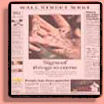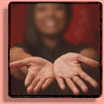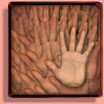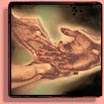
THE FUNCTION OF THE HAND
Synonyms: Hand Analysis - Palmistry - Palm Reading - Hand Reading - Cheirology
In the section Evolutionary Handanalysis is described that because of the long oposable thumb human kind has been able to take power on earth. The thumb is the basic element of the so-called 'precision grip'. Self-evidently the other fingers play an important part in the hand grip as well. The sequel of this page is dedicated to a description on the evolutionary functions of the various aspects of the hand.
The function of the dermatoglyphics
|
The dermatoglyphics & fingerprints have a supporting role in the hand grip. Until recently scientists thought that the dermatoglyphics create more ‘grip’ in our hands: the assumption was that without these ridges skin structures objects would slip out of our hands easily. Only recently (May 2009) a British scientist discovered that the human skin behaves like 'rubber': our hands need a contact surface to get a grip! And the presence of fingerprints makes the contact surface... smaller!! This explains why the British study pointed out: Fingerprints unlikely increase hand grip friction. |
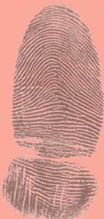 |
But one should not forget that dermatoglyphics have some crucial functions for the, including: the distribution of the perspiration in our hands. The perspiration is kind of the lubricating oil of the hand grip which makes that the skin of our palms doesn't get damaged easily during the contact with objects. So the fingerprints also likely prevent blistering, and therefore they do play an important role in the 'quality' of our hand grip!

The function of the nails
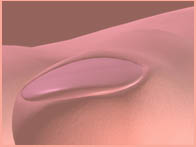 |
The nails have a surplus value for the hand grip as well. On the one side the nails can be used as a manipulative organ: one can use the nails for scratching and scraping, but for example one can use the nails as well for removing a plinter from our skin. On the other side nails have a stabilizing role. For the nails protect the nerve endings in the fingertips and this prevents the creation of callosity.
Because of the fingernails we don't lose our‘finger-spitzen gefühl’. |

De function of the lines (flexion creases)
In the frequently praised work presented by Cummins & Midlo (Finger Prints, Palms and Soles, 1943) is written on page 36-37 about the lines (skin creases):
|
" Skin Creases Flexion creases are not components of dermatoglyphics, but they are significant because of pecularities of epidermal ridges coursing in them. The flexion creases of the palm are the "lines" of the palmist. Several major creases cross the palm. Other creases occur at the wrist, at the junctions of digits with the palm, and in relation to the joints between the phalanges of digits. Flexion creases are present 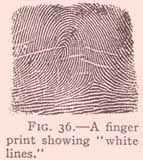 also on the sole, though with the exception of those associated with the toes they are not conspicuous after early childhood. Flexion creases represent the location of firmer attachment of the skin to underlying structures, and they are regions which remain relatively fixed during movement of the parts. There occur also, and more frequently in later life, certain groovings produced by buckling of the skin rather than motion in flexion. From their appearance in prints, such furrows are known as white lines.
"
also on the sole, though with the exception of those associated with the toes they are not conspicuous after early childhood. Flexion creases represent the location of firmer attachment of the skin to underlying structures, and they are regions which remain relatively fixed during movement of the parts. There occur also, and more frequently in later life, certain groovings produced by buckling of the skin rather than motion in flexion. From their appearance in prints, such furrows are known as white lines.
" |

The above observations indicate that in the perspective of the evolution only the palmar creases (hand lines) have no clear function related to the hand grip.
|
In the section medical handanalysis is described that according the present state of scientific knowledge the thumb, the fingers, the dermatoglyphics, and the nails can present specific manifestations which have medical diagnostic value.
True the Simian line, the Sydney line and a few other specific aspects of the lines have medical diagnostic value as well, however regarding the other aspects of the lines this is unproven.
|
|


